#FutureOfConnection
Explore tagged Tumblr posts
Text
In a hyper-connected world, why do we feel lonelier than ever? Can screens ever replace souls? #LifeWithinn #DigitalLoneliness #ConnectionMatters #GentleReflections #AIandEmotion
#ConnectionMatters#DigitalDetox#FutureOfConnection#GentleReminders#HumanConnection#LifeWithinn#LonelinessInTheDigitalAge#mental-health#MentalWellbeing#StayHuman#TechnologyAndEmotion
0 notes
Text

India is positioning itself as a global leader in 6G by spearheading international standards, regulations, and technology innovations. Backed by the Bharat 6G Vision and strong public-private collaboration, India seeks to influence the development of ultra-fast connectivity and drive digital inclusion. The move highlights India’s ambition to shape future telecom technologies.
#bharat6g#indialeads6g#6gindia#makein6g#digitalindia#6gtech#futureofconnectivity#india#telecomrevolution#nextgenconnectivity
2 notes
·
View notes
Text
youtube
eSIM Takeover | eSIMplified: Your guide to digital connectivity | Zetexa
Discover the Future of Connectivity with eSIM Technology! Say goodbye to traditional SIM cards and hello to a smarter, sleeker, and more secure future! Dive into eSIM technology and learn why the latest smartphones embrace this cutting-edge innovation.
Space-Saving Design: Removing the SIM card slot frees up valuable space for bigger batteries, better cameras, and more advanced features. Ultimate Flexibility: Switch carriers easily without the hassle of swapping physical cards—perfect for travelers and those who value network freedom. Make an eco-friendly Choice: Discover how eSIMs are championing the cause of sustainability by significantly reducing plastic waste. Enhanced Security: Discover how embedded eSIMs offer superior protection against theft and fraud.
Get your eSIM today - Zetexa
#eSIM#SmartphoneInnovation#MobileTechnology#TechTrends#FutureOfConnectivity#EcoFriendlyTech#SecureTechnology#TravelTech#NetworkFlexibility#CarrierSwitch#MobileSecurity#TechNews#LatestSmartphones#MobileInnovation#SmartphoneFeatures#SustainableTech#MobileAdvancements#Youtube
2 notes
·
View notes
Text
#6G#AI#Telecommunications#Innovation#Research#Partnership#VIAVI#HanyangUniversity#FutureOfConnectivity#powerelectronics#powermanagement#powersemiconductor
0 notes
Text
5G Network Slicing Market Future Trends Shaping Next-Gen Connectivity Across Key Global Industries
The 5G network slicing market is rapidly evolving as industries worldwide seek more efficient, reliable, and customized wireless communication. Network slicing, a pivotal feature of 5G architecture, allows the creation of multiple virtual networks on a single physical infrastructure. This approach provides tailored connectivity solutions for diverse applications, each with unique latency, speed, and capacity requirements. As global digital transformation accelerates, future trends in the 5G network slicing market are set to redefine how businesses operate and deliver services.

Expansion of Industry-Specific Network Slices
One of the most significant future trends is the rise of industry-specific network slices. Businesses are moving away from a one-size-fits-all approach and demanding dedicated slices tailored to their operational needs. In sectors like manufacturing, ultra-reliable low-latency slices enable real-time control of automated machinery. Meanwhile, in healthcare, secure and high-bandwidth slices facilitate remote surgeries and telemedicine services. This trend reflects a growing shift toward customized network solutions that support mission-critical operations without interference.
Growth of Private 5G Networks
The growing adoption of private 5G networks is another major driver of the 5G network slicing market. Enterprises are deploying their own localized 5G infrastructure to ensure data privacy, enhanced control, and performance optimization. With slicing capabilities, these private networks can support various internal use cases simultaneously, from connected devices on the factory floor to AR-powered training modules. As more companies invest in private 5G setups, the demand for scalable and dynamic network slicing will increase.
Integration with AI and Automation
Artificial intelligence and automation are increasingly being integrated into the management of network slices. AI algorithms can dynamically allocate resources based on real-time traffic and service requirements, optimizing performance and reducing operational costs. Automation further enables self-healing and self-optimizing networks, ensuring minimal downtime and high reliability. As AI technologies become more advanced, their role in the orchestration and lifecycle management of network slices will become even more crucial.
Enhanced Security Protocols and Data Isolation
Security is a top concern in any network architecture, and slicing introduces a new dimension to securing data. Future trends indicate a focus on more robust and isolated security frameworks within each slice. Since network slices serve different applications—ranging from financial transactions to public safety communication—each requires customized security protocols. Enhanced isolation between slices ensures that vulnerabilities in one slice do not compromise others, thereby making slicing a secure solution for multi-tenant environments.
Surge in Smart City Applications
Smart cities are poised to be among the biggest beneficiaries of 5G network slicing. With interconnected infrastructure, smart transportation, energy management, public safety, and citizen services can each operate on their own dedicated slice. This ensures efficiency, reliability, and seamless coordination across city systems. As urban centers continue to adopt smart technologies, the market for network slicing tailored to municipal needs is expected to grow exponentially.
Evolution of Business Models and Revenue Streams
Network slicing is also transforming the traditional telecom business model. Service providers can now offer differentiated services with varying levels of performance, creating new revenue streams. For instance, an enterprise might pay a premium for a high-security, low-latency slice while another opts for a cost-effective slice for basic communication needs. This service-based model not only boosts profitability but also increases customer satisfaction by offering flexibility and personalization.
Edge Computing and Distributed Slicing
Edge computing plays a vital role in supporting the low-latency requirements of network slices. By processing data closer to the end user, edge infrastructure complements network slicing by enhancing speed and responsiveness. Future developments are likely to include distributed slicing models, where slices extend from the core network to the edge, offering end-to-end performance optimization. This will be essential for applications like autonomous vehicles, which require real-time decision-making and minimal latency.
Global Rollout and Regulatory Frameworks
As more countries roll out 5G, regulatory frameworks will play a key role in shaping the network slicing landscape. Governments and telecom authorities are working to establish standards that ensure interoperability, fairness, and security across slices. Future market growth will be influenced by how well these regulations balance innovation with risk management, especially as cross-border data and services become more prevalent.
Conclusion
The future of the 5G network slicing market is marked by innovation, customization, and growth. From industry-specific applications and smart city deployments to the integration of AI and edge computing, slicing is poised to revolutionize how networks are built and services are delivered. Businesses and service providers that embrace these trends early will be well-positioned to capitalize on the immense potential of 5G connectivity.
0 notes
Text
The Role of Wireless Networks in Dubai’s Smart City Development
Dubai has always been a city of the future. From towering skyscrapers to driverless metro systems, it's a place where innovation isn’t a trend—it’s a way of life. At the heart of this futuristic vision lies a powerful force working silently behind the scenes: wireless networks. As Dubai marches toward becoming one of the smartest cities in the world, the Best Wireless Network in Dubai plays a pivotal role in connecting people, devices, and ideas like never before.
Let’s dive into how wireless technology is shaping the very core of Dubai’s smart city infrastructure.
Why Wireless Networks are Essential to Smart Cities
Wireless networks are the nervous system of a smart city. Without them, there’s no communication, no data transfer, and certainly no automation. Here's how the Best Wireless Network in Dubai helps build smarter communities:
Seamless Connectivity: From IoT devices to smartphones, wireless networks ensure continuous connectivity for millions of users and systems.
Smart Infrastructure: Traffic lights, streetlights, and surveillance cameras rely on wireless communication to function intelligently.
Public Safety: Real-time data sharing between emergency services and smart surveillance systems enhances public security.
Sustainable Living: Smart grids and meters help monitor and reduce energy consumption, all made possible through wireless networks.
Efficient Transportation: Wi-Fi-enabled buses, taxis, and metros provide real-time updates and smoother commuter experiences.
The Emotional Impact of Connectivity
It’s not just about technology—it’s about how it makes people feel. Imagine being able to check in on your loved ones through a smart health monitoring system or having your elderly parent wear a connected device that alerts you in an emergency. That’s the magic of the Best Wireless Network in Dubai—it brings people closer, even when they’re far apart.
In a city that never sleeps, staying connected offers peace of mind, convenience, and a sense of belonging. It’s how a city becomes not just smart—but truly human.
Where Dubai is Headed: A Glimpse Into the Future
Dubai’s smart city vision includes:
Autonomous public transport
AI-driven traffic systems
Smart homes and buildings
Eco-friendly energy solutions
Fully connected government services
None of this is possible without strong, reliable wireless infrastructure. That’s why choosing the Best Wireless Network in Dubai is not just a necessity—it’s a foundation for innovation.
Why Businesses and Residents Must Act Now
Whether you’re a startup owner, a government agency, or a family living in an apartment tower, the time to embrace smart living is now. As Dubai rapidly expands its smart capabilities, early adoption ensures you stay ahead, remain efficient, and enjoy a better quality of life.
Choose the Best – Choose Maxinfotech
At Maxinfotech, we understand the heartbeat of Dubai’s smart city dream. Our solutions provide the Best Wireless Network in Dubai, delivering high-speed, secure, and scalable connectivity for homes, offices, and public infrastructure.
Our team is passionate about creating a smarter, safer, and more connected future—because we believe smart cities are built with care, trust, and the right technology.
Ready to Connect to the Future?
Whether you're upgrading your business or transforming your home, it all begins with the Best Wireless Network in Dubai. Let Maxinfotech lead the way. Reach out to us today and be part of Dubai’s extraordinary smart city journey.
#SmartCityDubai#WirelessNetworkDubai#DubaiTechInnovation#IoTDubai#FutureOfConnectivity#MaxinfotechDubai
0 notes
Text

🚀 Experience Next-Gen 5G Speeds with the DWR-3000M! ⚡
Blazing-fast 3.2 Gbps speeds for seamless streaming, gaming, and browsing. 🌐📲 Dual-band Wi-Fi (2402 Mbps + 574 Mbps) ensures ultra-smooth connectivity for all your devices. 🎥📡
Stay connected, stay fast! 🔥
For more information, Visit:https://newtrend.ae/product-category/dlink/ Live chat: +971 507542792
#5GRouter#HighSpeedInternet#SeamlessConnectivity#UltraFastInternet#NextGenSpeed#WiFi6#HighSpeedNetworking#SmartHome#GamingRouter#StreamingWithoutLimits#FutureOfConnectivity
0 notes
Video
youtube
🚀 Satellite Mega-Constellations: How Thousands of Satellites Will Provid...
#youtube#SatelliteMegaConstellations Starlink GlobalInternet SpaceTech FutureOfConnectivity InternetEverywhere ElonMusk SpaceX OneWeb SatelliteNetwor
0 notes
Text
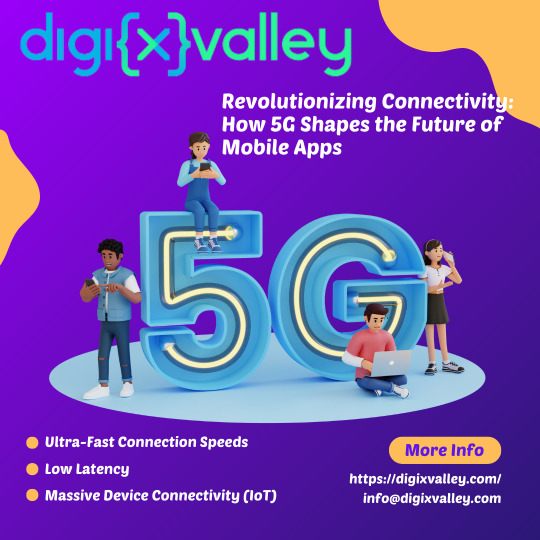
5G is redefining mobile web apps with faster speeds, low latency, and endless innovation.
#5GTechnology#MobileAppInnovation#FutureOfConnectivity#RevolutionizingTech#5GRevolution#NextGenApps#TechInnovation#5GImpact#MobileApps2024#DigitalTransformation
0 notes
Text
#best college of engineering in trichy#best autonomous college of engineering in trichy#krce the top engineering college in trichy#top college of engineering in trichy#krce the best college of engineering in trichy#college life stories#5GTechnology#TechRevolution#FutureOfConnectivity#DigitalTransformation#SmartCities
0 notes
Text

🌐Linking Visions, Bridging Futures
Ton Connect - Where the TON and Telegram Worlds Converge
Step Into a New Era of Connectivity.
0 notes
Text
Unlocking Enhanced Connectivity: The Evolution Of Dual-Band Antennas
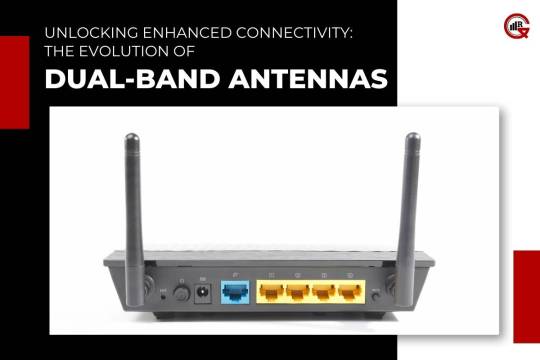
In an era where seamless connectivity is paramount, the advancement of antenna technology plays a pivotal role in facilitating reliable communication across various applications. Among the innovations that have revolutionized wireless communication is the dual-band antenna. In this article, we explore the intricacies of dual-band antennas, their applications, and the impact they have on enhancing connectivity in diverse environments.
Understanding Dual-Band Antennas:
Dual-band antennas are a type of antenna designed to operate across two distinct frequency bands simultaneously. Unlike traditional antennas that are optimized for a single frequency band, dual-band antennas offer the versatility of supporting multiple frequency bands within a single compact design. This capability enables them to cater to a wide range of wireless communication systems and devices, providing enhanced performance and flexibility.
Design and Operation:
https://gqresearch.com/wp-content/uploads/2024/04/2.2.-Design-and-Operation.jpg
The design of dual-band antennas is engineered to accommodate two frequency bands while minimizing interference between them. This typically involves the incorporation of multiple radiating elements or the use of specialized impedance-matching techniques. By carefully tuning the antenna’s parameters, such as length, width, and spacing, engineers can optimize its performance across both frequency bands.
Dual-band antennas can operate in various configurations, including dipole, patch, loop, and helical designs, depending on the specific application requirements. Each configuration offers unique advantages in terms of radiation pattern, gain, and polarization, allowing for customization based on the intended use case.
Applications of Dual Band Antennas:
Dual-band antennas find applications across a wide range of wireless communication systems and devices, spanning different industries and sectors. Some common applications include:
Wireless Networking: Dual-band antennas are widely used in wireless networking devices, such as routers, access points, and Wi-Fi-enabled devices. By supporting both the 2.4 GHz and 5 GHz frequency bands, band antennas enable faster data transmission, reduced interference, and improved network performance.
Cellular Communication: In the realm of cellular communication, dual-band antennas are employed in smartphones, tablets, and other mobile devices to ensure seamless connectivity across multiple frequency bands. They allow users to access 4G LTE, 5G, and other cellular networks with enhanced coverage and reliability.
Satellite Communication: Dual antennas play a crucial role in satellite communication systems, where they are used for transmitting and receiving signals from satellites in both the L-band and Ku-band frequency ranges. These antennas enable high-speed data transfer and reliable communication for applications such as broadcasting, telecommunication, and remote sensing.
RFID and NFC Systems: These antennas are utilized in radio frequency identification (RFID) and near-field communication (NFC) systems for tracking and authentication purposes. They enable efficient data exchange between RFID tags and readers, as well as NFC-enabled devices, in diverse environments such as retail, logistics, and access control systems.
Automotive Telematics: In the automotive industry, these antennas are integrated into vehicles for telematics applications, including GPS navigation, vehicle tracking, and in-car entertainment systems. These antennas support both the GPS/GNSS (Global Navigation Satellite System) and cellular bands, enabling real-time location tracking and communication with remote servers.
Advantages of Dual Band Antennas:
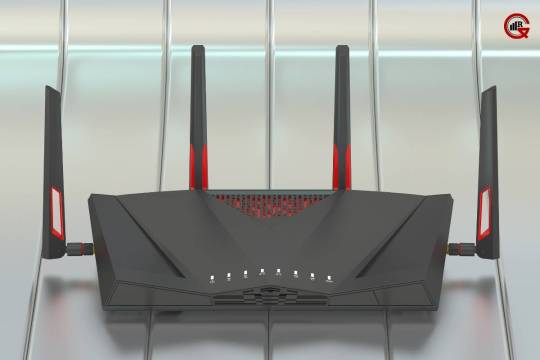
These antennas offer several advantages over single-band antennas, making them a preferred choice for modern wireless communication systems:
Versatility: Dual antennas provide support for multiple frequency bands, allowing them to be used in a wide range of applications without the need for separate antennas. This versatility simplifies system design and integration, reducing costs and complexity.
Enhanced Performance: By operating across two frequency bands, dual antennas offer improved performance in terms of coverage, data throughput, and signal quality. They can mitigate interference and congestion issues commonly encountered in single-band systems, resulting in more reliable and efficient communication.
Space Efficiency: Dual antennas enable the consolidation of multiple antennas into a single compact unit, saving valuable space and reducing clutter in devices and infrastructure. This space efficiency is particularly beneficial in applications where size constraints are a concern, such as mobile devices and embedded systems.
Future-Proofing: With support for multiple frequency bands, band antennas are well-equipped to adapt to evolving communication standards and technologies. They offer future-proofing capabilities, ensuring compatibility with upcoming wireless networks and protocols without the need for hardware upgrades.
Cost-Effectiveness: Despite their advanced capabilities, dual antennas are cost-effective solutions compared to deploying separate antennas for each frequency band. Their integrated design and simplified installation process result in lower deployment and maintenance costs over the long term.
Improved Signal Quality: Band antennas are designed to optimize signal reception and transmission across multiple frequency bands, resulting in improved signal quality and reliability. This ensures that users experience consistent connectivity and minimal signal degradation, even in challenging environments with obstacles or interference.
Seamless Roaming: Dual antennas facilitate seamless roaming between different wireless networks or access points operating on different frequency bands. This capability is particularly beneficial in scenarios where devices need to transition between Wi-Fi networks or cellular towers without experiencing interruptions in connectivity.
Increased Network Capacity: By supporting multiple frequency bands, band antennas help increase the overall network capacity and bandwidth available for data transmission. This allows for more devices to connect simultaneously without sacrificing performance, leading to enhanced user experiences in crowded or high-density environments.
Enhanced Security: Band antennas can be configured to implement advanced security features, such as encryption and authentication protocols, to protect sensitive data transmitted over wireless networks. This ensures that communication remains secure and safeguarded against unauthorized access or eavesdropping attempts.
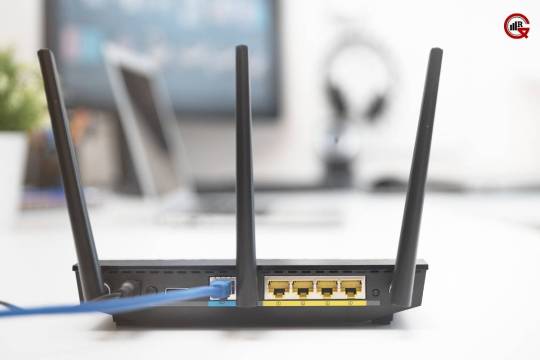
Optimization for Specific Applications: Dual antennas can be customized and optimized for specific applications or use cases to maximize performance and efficiency. For example, in indoor Wi-Fi deployments, dual antennas can be configured to prioritize coverage in specific areas or to minimize interference from neighboring networks.
Integration with MIMO Technology: Many antennas incorporate multiple-input multiple-output (MIMO) technology, which utilizes multiple antenna elements to improve data throughput and reliability. By harnessing the spatial diversity of multiple antennas, MIMO-enabled antennas can achieve higher data rates and better signal quality, especially in high-speed wireless communication systems.
Compatibility with Multi-Protocol Devices: Dual antennas are compatible with multi-protocol devices that support different wireless standards and protocols, such as IEEE 802.11 (Wi-Fi), Bluetooth, Zigbee, and cellular technologies. This compatibility ensures seamless connectivity across diverse devices and networks, enabling interoperability and flexibility in communication ecosystems.
Environmental Resilience: Dual antennas are engineered to withstand harsh environmental conditions, including extreme temperatures, moisture, and mechanical stress. This resilience makes them suitable for outdoor deployments in industrial, military, and transportation applications, where reliable communication is critical for mission-critical operations.
Scalability and Future Expansion: Dual antennas offer scalability and flexibility to accommodate future expansion and growth in wireless networks. As technology evolves and new frequency bands are allocated for communication purposes, dual antennas can adapt and support additional bands through firmware updates or hardware modifications, ensuring long-term compatibility and investment protection.
Conclusion:
In conclusion, band antennas represent a significant advancement in wireless communication technology, offering enhanced connectivity, versatility, and performance across a wide range of applications. Whether used in wireless networking, cellular communication, satellite systems, RFID, automotive telematics, or other domains, band antennas play a crucial role in enabling seamless and reliable connectivity in today’s interconnected world. As the demand for faster, more efficient wireless communication continues to grow, dual-band antennas are poised to remain at the forefront of innovation, driving the evolution of connectivity solutions for years to come.
0 notes
Text
5G Technology: Everything You Need to Know About the Next Generation of Wireless Technology

How Is 5G Technology Transforming Communication And Shaping The Future Of Connectivity?
Technology has always evolved by pushing restrictions and offering up new opportunities. The development of 5G technology has radically altered how we interact and communicate in recent years. While 4G's predecessor gave us quicker internet connections and better mobile connectivity, 5G raises the bar. This article covers 5G's effects on communication, the Internet of Things (IoT), autonomous vehicles, and the future of connection.
Capabilities and Impact on Communication
5G technology has an immediate and noticeable effect on communication. 5G promises lightning-fast internet speeds, reduced latency, and improved network reliability. We can expect seamless video calls, high-quality video streaming, and lag-free online gaming, even in crowded places. Imagine conducting a video conference call with colleagues or loved ones without any buffering or pixelation. 5G's increased bandwidth and speed will make this a reality. Moreover, the reduced latency of 5G networks means that real-time communication will be incredibly responsive, facilitating applications like remote surgery and augmented reality (AR) experiences.
IoT Revolution
In the Internet of Things (IoT), commonplace items are linked to the Internet, sharing information, and cooperating to improve our quality of life. Making this vision a reality will require 5G in a big way. Because 5G can link several devices at once, IoT devices can interact with it without any issues. Numerous industries, including smart cities, agriculture, healthcare, and logistics, will be significantly impacted by this. Smart cities offer raised safety for everyone, energy conservation, and real-time traffic monitoring. IoT devices used for farming may gather data to increase agricultural yields and decrease resource waste. In the medical field, timely availability of medical data and monitoring of patients from afar can save lives. By providing the essential infrastructure for Internet of Things (IoT) gadgets to thrive, 5G technology lays the door for these breakthroughs.
Autonomous Vehicles and Transportation
Autonomous vehicles are the way of the future of transportation, and 5G is the force behind this transition. Decisions have to be made in a split second, and infrastructure as well as cars must be communicated with instantly. Self-driving vehicles need 5G's low latency and enormous bandwidth to operate efficiently and securely on the road. With 5G, vehicles can communicate with each other and with traffic signals, enabling them to make informed decisions in real-time. This technology is not only poised to reduce traffic accidents but also promises to make transportation more efficient, reducing congestion and pollution in our cities.
The Future of Connectivity
The impact of 5G extends far beyond our smartphones and connected devices. It lays the foundation for the future of connectivity, where virtually everything is linked and empowered by the internet. Beyond the applications mentioned earlier, 5G will empower industries like manufacturing, education, and entertainment in ways we can only begin to imagine. The Industrial Internet of Things (IIoT), enabled by 5G, has the potential to create more intelligent factories with equipment capable of diagnosing problems and ordering new components, cutting costs and downtime.
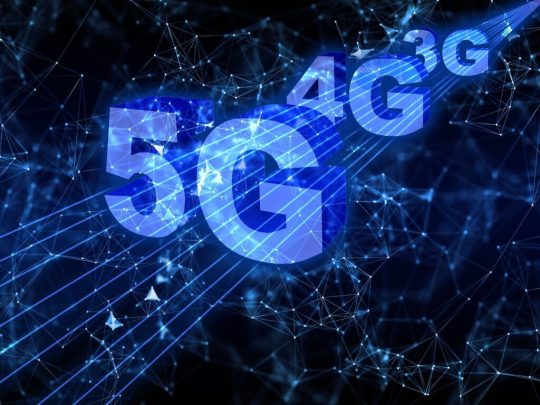
The Power of 5G Technology Due to the possibilities of 5G for virtual reality and augmented reality applications, distance education in the educational setting will become more immersive and engaging. With 8K streaming and lag-free online gaming, 5G can bring immersive experiences in media unlike anything seen before.
Internet and Connectivity of 5G Technology
The internet has blended seamlessly into every day in our highly interconnected society. It influences the way we learn, communicate, work, and play. The complicated environment of internet infrastructure, 5G technology, and ongoing discussions about neutrality on the internet, however, exists below the surface of this digital world. We'll examine these crucial facets of connection and the web in this essay, as well as the difficulties that exist for worldwide connectivity.
Internet Infrastructure: The Backbone of Digital Connectivity
A vast and complex network of infrastructure serves as the Internet's structural backbone. Data centers, fiber optic cables, satellites, and networking routers make up the infrastructure's supporting structures. In data centers, enormous amounts of data are processed and stored, while fiber optic cables and satellites enable high-speed data transit across continents and seas. As the demand for faster and more reliable connectivity grows, the expansion and maintenance of this infrastructure become paramount. The development of new technologies, like 5G, is a testament to our unending quest for better internet connectivity.
5G Technology: A Game Changer for Connectivity
Internet connectivity has advanced significantly with the introduction of 5G technology. It claims to connect more devices at once and deliver faster bandwidth and lower latency. Using bandwidth-intensive applications, streaming high-definition films, and downloading huge files will all be smooth experiences with 5G. Additionally, 5G technology will make it possible for various networked devices to effectively communicate with one another, enabling the Internet of Things (IoT) to reach its full potential. By simplifying processes and boosting service standards, this has the potential to revolutionize industries including healthcare, transportation, and manufacturing.
Net Neutrality: Ensuring an Open Internet
Net neutrality is a hotly debated topic in the world of internet policy. At its core, it's the principle that internet service providers (ISPs) should treat all data on the internet equally, without discrimination or preference. Net neutrality ensures that ISPs don't block or throttle access to certain websites or services while prioritizing others.
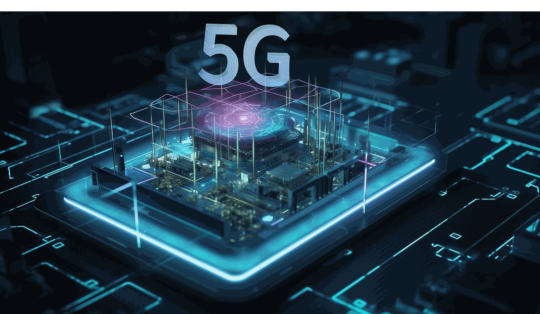
5G Technology: The New Innovations The concept of net neutrality safeguards a free and open internet where users have equal access to information and services. Advocates argue that without net neutrality, ISPs could potentially control what content users can access, potentially stifling competition and limiting online freedom. Challenges of Global Connectivity Despite the advancements in internet infrastructure and technologies like 5G, global connectivity still faces several challenges: - Access Disparities: Not everyone around the world has equal access to the internet. Rural and remote areas often lack the necessary infrastructure, leaving residents with limited connectivity options. - Digital Divide: Socioeconomic disparities impact Internet access. A digital gap that limits educational and professional prospects may be caused by lower-income people and communities' inability to purchase high-speed internet. - Security Concerns: Threats to cybersecurity are on the rise as a result of our increasing reliance on the internet. Data, privacy, and crucial infrastructure must all be protected from threats. - Regulatory Complexities: Navigating the regulatory landscape of the global internet is complex. Different countries have varying laws and regulations regarding data privacy, content censorship, and online freedoms.
Overview of 5G Technology and Internet and Connectivity
Our digital era is centered on the internet and connection. It's critical to comprehend the complexity of internet infrastructure, the possibilities of 5G technology, the value of net neutrality, and the difficulties associated with global connection. Addressing these issues and providing fair access to the digital world will continue to be a key concern in the changing connectivity environment as we continue to depend more and more on the internet. The introduction of 5G technology represents a paradigm leap in how we connect, communicate, and live rather than merely a minor advancement. It significantly affects networking, the Internet of Things, autonomous vehicles, and communication. Our devices, cities, and industries will become smarter and more linked than ever before as we enter a transformational era. As 5G networks spread around the world, we could be looking forward to a time when possibilities are nearly endless and our lives, careers, and recreational pursuits will all be irrevocably changed.

Read the full article
#communication#futureofconnectivity#5Gtechnology#5GTechnology#5GTechnology:AGameChangerforConnectivity#5GTechnology:TheFutureofCommunication#5GTechnology:TheNextGenerationofCommunicationandConnectivity#5GTechnology:TransformingCommunication#5G:EverythingYouNeedtoKnowAbouttheFutureofMobileNetworks#5G:EverythingYouNeedtoKnowAbouttheNextGenerationofWirelessTechnology#5G:TheFutureofConnectivityisHere#5G:TheKeytoaMoreConnectedandAutomatedWorld#5G:TheKeytoUnlockingNewPossibilitiesinCommunication#5G'sImpactonCommunication#and.#andAutonomousVehicles#andConnectivity'sFuture#andMore#andPlay#andShapingtheFutureofConnectivity#andtheFutureofConnectivity#AutonomousVehicles#AutonomousVehiclesandTransportation#CapabilitiesandImpactonCommunication#ChallengesofGlobalConnectivity#How5GTechnologyWillRevolutionizeCommunication#How5GWillChangetheWayWeConnect#How5GWillChangetheWorld:AComprehensiveGuide#How5GWillRevolutionizeCommunication#How5GWillRevolutionizetheWayWeLive
0 notes
Text
Avalon Powering Next-Gen Connectivity with Indigenous 5G/6G Innovations From cutting-edge PCB design, simulations, and NPI/high volume builds, we're your manufacturing partner in shaping the future of telecommunication hardware products. Dive into the era of ultra-fast, reliable systems builds with us. https://www.avalontec.com/ Avalon Technologies Limited Sienna Ecad Sienna Corporation

#telecommunications hashtag#5gtechnology hashtag#6GFuture hashtag#pcbdesign hashtag#techinnovation hashtag#futureofconnectivity hashtag#highvolumemanufacturing hashtag#npi hashtag#wirelesstechnology hashtag#AvalonTech
0 notes
Text
Is eSIM better than physical SIM?
This article looks at a simple question: 'Is eSIM better than physical SIM?' We're talking about how phones connect to the internet. We'll check out the good and not-so-good things about both. Come along to find out if the eSIM is really better than the regular physical SIM card we're used to.
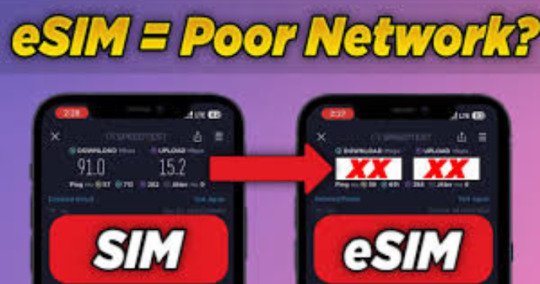
Is eSIM better than physical SIM?
Understanding eSIM and Physical SIM Cards
Define eSIM and physical SIM cards
Physical SIM card is a module which is smaller and can be inserted or removed from the mobile. Information is written on the physical SIM card such as its size i.e. how many contacts can be saved on it and the ICCID code of 18 to 22 digits is written. A SIM that is already digitally built into the phone, completely eliminating the effects of physical SIM card loss and misuse, and is pre-programmed with carrier information. Users can switch between more than 4 eSIM profiles, providing flexibility and convenience.
Difference Between eSIM and physical SIM cards
eSIM cannot be removed but physical SIM can be removed.
The network can be changed easily in eSIM but the network cannot be changed in physical SIM.
Any plan from any network provider can be activated in eSIM, but to change the network in physical SIM, a new SIM card will have to be ordered.
eSIM is inbuilt in the phone while physical SIM comes in three sizes: standard, micro and nano.
Advantages of eSIM
Due to its flexibility, we can switch from one mobile network to another without ordering a new physical SIM card.
eSIM eliminates the need for a physical SIM card, allowing manufacturers to make their mobiles with even slimmer and compact designs.
eSIM can be activated and mobile plans can be managed at home without visiting the offline stores of mobile carriers, which improves the user experience.
Advantages of physical SIM
Apple iPhone is the only major brand which has eSIM inbuilt but till now physical SIM cards are king in most of the budget mobile brands like Realme, Redmi, Techno.
Buying a new SIM from the offline shop of mobile carriers and inserting it is a very easy process.
If the physical SIM card gets damaged or lost, you can go to the mobile carriers and get it back for use with a new physical SIM card with the same number.
You can activate the services of physical SIM card without any network connection. This will be beneficial when the internet connection is within a limited range.
[click to continue reading...]
#esim card#PhysicalSIM#mobiletechnology#sim card#telecommunications#DigitalTransformation#mobile devices#wirelesstechnology#eSIMvsPhysicalSIM#mobile connectivity#TechnologyDebate#SIMCardComparison#eSIMAdvantages#mobileinnovation#techcomparison#DigitalSIM#eSIMBenefits#TelecomTrends#FutureOfConnectivity#MobileDevicesComparison
1 note
·
View note
Text
Key Drivers Fueling Growth in the 5G Infrastructure Market
The 5G infrastructure market is expanding at an unprecedented pace, fueled by multiple factors that are reshaping the global communication landscape. As the world shifts towards faster, more reliable, and seamless connectivity, the demand for robust infrastructure to support 5G networks is on the rise. From telecom operators to governments and businesses, the push for 5G technology is transforming industries, driving innovation, and enabling new use cases. This article explores the key drivers of the 5G infrastructure market and the role they play in its growth.

1. Demand for Faster Internet Speeds and Lower Latency
One of the most significant drivers of the 5G infrastructure market is the increasing demand for faster internet speeds and lower latency. 5G technology promises speeds up to 100 times faster than 4G, enabling seamless streaming, real-time communication, and enhanced user experiences. As data consumption grows across sectors, including entertainment, healthcare, and smart cities, the need for ultra-low latency connections becomes critical. To meet these expectations, telecom providers are investing heavily in 5G infrastructure.
2. Rising Adoption of Internet of Things (IoT)
The rapid growth of the Internet of Things (IoT) is another key factor propelling the 5G infrastructure market. IoT devices, from smart home appliances to industrial machines, require high-speed, reliable networks to communicate effectively. 5G networks are specifically designed to handle the massive influx of connected devices and the data they generate. This opens new avenues for industries such as manufacturing, transportation, and healthcare to adopt IoT technologies, further boosting demand for 5G infrastructure.
3. Smart Cities and Automation
The development of smart cities is another major contributor to the growth of the 5G infrastructure market. Smart cities rely on a vast network of connected devices, such as sensors, cameras, and traffic systems, to enhance urban living and improve operational efficiency. With the ability to support high data transmission rates and low latency, 5G infrastructure is crucial for the successful implementation of smart city technologies. Automation in various sectors, including transportation and energy management, also relies on 5G's capabilities, thus driving its infrastructure needs.
4. Increased Demand for High-Quality Video Streaming
The growing demand for high-quality video streaming services, including 4K and 8K video, is another driver for the 5G infrastructure market. With the shift toward digital entertainment, consumers are demanding uninterrupted, high-definition content streaming across multiple devices. 5G networks provide the necessary bandwidth and low latency for smooth streaming experiences, enabling service providers to meet consumer expectations and capitalize on the growing trend of online video consumption.
5. Technological Advancements in Telecommunications
Ongoing technological advancements in telecommunications are significantly impacting the 5G infrastructure market. Innovations such as beamforming, massive MIMO (multiple input, multiple output), and network slicing are improving the efficiency and performance of 5G networks. These advancements allow telecom operators to offer more reliable and scalable services, supporting the continued growth of the 5G ecosystem. Additionally, the rollout of 5G-enabled devices and equipment is contributing to the expansion of the infrastructure market.
6. Government Initiatives and Investments
Governments worldwide are actively supporting the rollout of 5G networks through policy initiatives, funding, and regulatory frameworks. Many countries recognize the economic and strategic importance of 5G technology and are prioritizing its deployment. In regions such as North America, Europe, and Asia-Pacific, government investments and subsidies are playing a pivotal role in accelerating the growth of the 5G infrastructure market. Furthermore, government-backed programs often aim to bridge the digital divide and ensure equitable access to advanced connectivity in underserved areas.
7. Improvement in Mobile Broadband Services
As consumer expectations for mobile broadband services continue to rise, telecom operators are prioritizing 5G to meet these demands. With 5G's ability to deliver faster download speeds, improved network capacity, and reduced congestion, mobile broadband services are poised for significant improvements. This has led to a surge in investments in 5G infrastructure, especially in urban areas with high data traffic, ensuring a seamless experience for mobile users.
8. Expansion of Cloud Computing and Edge Computing
Cloud computing and edge computing technologies are increasingly integrated into the 5G ecosystem, further driving the demand for 5G infrastructure. 5G networks enable faster data processing and storage at the edge, reducing latency and ensuring efficient cloud services. As more businesses migrate to the cloud and adopt edge computing, the need for 5G infrastructure to support these technologies will continue to grow. This synergy is creating new opportunities for telecom companies to develop and deploy advanced infrastructure solutions.
9. The Rise of Autonomous Vehicles
The development and deployment of autonomous vehicles is another factor influencing the demand for 5G infrastructure. Autonomous cars and trucks rely on real-time communication between vehicles, infrastructure, and centralized systems to ensure safety and operational efficiency. 5G technology’s low latency and high-speed capabilities make it the ideal solution for supporting the vast amounts of data exchanged between these connected systems. As autonomous vehicles become more mainstream, the need for 5G infrastructure will increase substantially.
10. Growth in the Enterprise Sector
The enterprise sector is increasingly adopting 5G technologies to improve business operations, enhance productivity, and streamline communication. With 5G, businesses can take advantage of private networks, real-time data analytics, and automated processes, all of which contribute to greater operational efficiency. As companies across industries such as manufacturing, logistics, and healthcare embrace 5G for their digital transformation, the demand for infrastructure solutions that support these enterprise applications is growing.
Conclusion
The 5G infrastructure market is driven by a combination of technological advancements, consumer demands, and business needs. As industries embrace the power of 5G to improve connectivity, enhance productivity, and enable new use cases, the market for infrastructure solutions will continue to expand. Governments, telecom providers, and businesses must work together to ensure the successful rollout of 5G networks, unlocking the full potential of this transformative technology.
0 notes